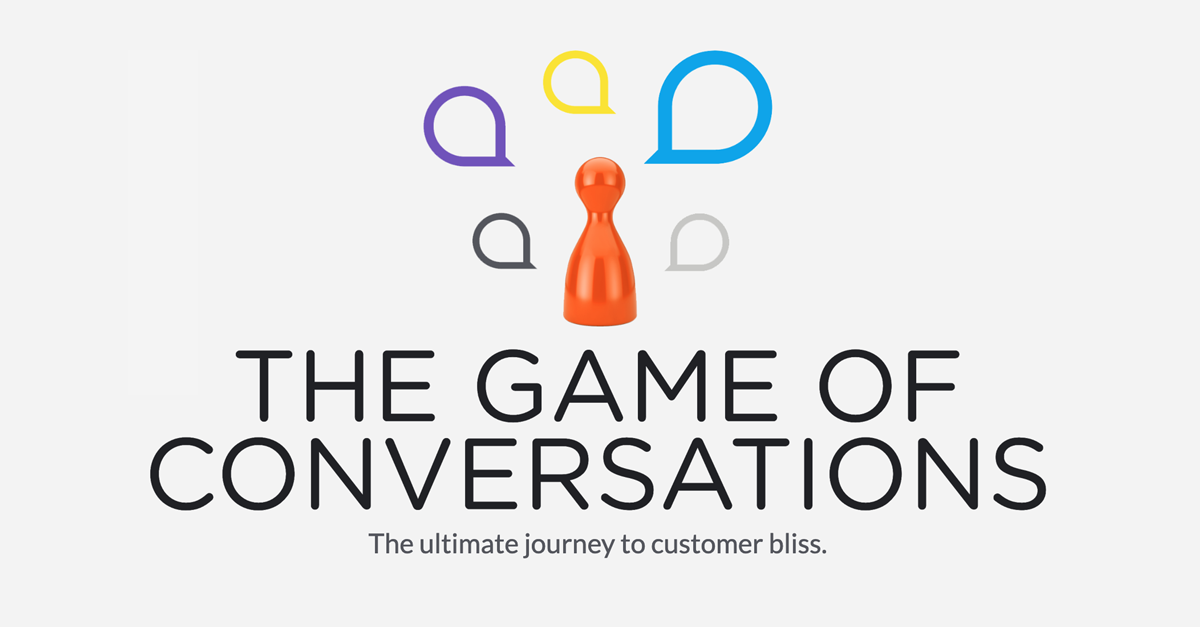As part of our design practice, we spend time talking to consumers who interact with the AI applications we build. When people like an experience, they often describe it as conversational and say that it feels like talking to a person. Similarly, our clients use conversational as a way to describe the experiences they want to provide their customers. So clearly, cultivating conversational-ness is key to delivering experiences that meet expectations. What are the ingredients in this special conversational sauce?
Step one is to interview both consumers and clients to have them explain exactly what conversational means. Turns out, it’s a surprisingly hard question to answer. Conversational is definitely a good thing: experiences we like and want are conversational, experiences we dislike and avoid are robotic. It’s an easy judgment to make–we know conversational when we see it–but it’s difficult to explain how we know.
Instead, people often talk about how they recognize something that’s not conversational. Robotic experiences are uncomfortable and take more effort than conversational ones. They make us search for the magic words to say to get what we want, rather than letting us say what comes naturally. Robotic interactions don’t quite work as we expect them to and they go off track for no obvious reason. They force us to go against our conversational instincts and follow a different set of rules to get what we need.
Based on this, we can say that conversational experiences are comfortable, easy, intuitive and conform to our expectations about how conversations work. But there are some more specific ingredients in the secret conversational sauce that help us design experiences that work for consumers.
Conversational experiences are personable
If we’re engaged in a conversation, we’re always talking to someone, not something. Conversations are inherently social so our brains are always making judgments about who the other guy is based on what they’re saying and how they say it. And this is true even when we’re completely sure that we’re talking to a bot, not a human. We decide how much we like and trust the bot according to the characteristics we perceive, which ultimately determines how willing we are to interact with it. Designers create more conversational experiences by deliberately defining the personality of the bot to embody the client’s brand and align with their goals for the application.
Conversational experiences are cooperative
When a conversational bot engages a person, it implicitly conveys certain rights to them and accepts responsibility for holding up its end of the conversation. The most basic and perhaps most profound way this plays out is turn-taking. When you’re talking, it’s my responsibility to pay attention, listen, and try to understand what you mean. When it’s my turn to talk, you take on those responsibilities and I’m responsible for coming up with a relevant response in a timely manner. In human-human conversation, turn-taking is precision timed (and interestingly, completely beneath our awareness) so it’s not something we pay attention to, but it’s essential in making an experience feel conversational. The lesson for designing bots is to respect this turn-taking structure by ensuring that we give the user clear signals about when it’s their turn to speak, giving them enough time to do so, and making sure that the bot responds in the expected timeframe.
Conversational experiences have guardrails
One element of producing a cooperative response is letting our conversation partner know that we heard and understood what they just said. Simply moving ahead to the response without offering such an acknowledgement can derail the flow of the conversation. If I respond without demonstrating that I understood what you just said, you may feel unsettled and perceive me as a bit rude. You may even wonder if I really comprehended your contribution, which diverts your attention away from what I’m saying, and may cause you to interrupt to ask if the bot understood. Offering evidence of understanding is inherent to keeping conversations on track. Designers build this into automated experiences by including acknowledgement and confirmation prompts that demonstrate that the bot is following what the user is saying.
Conversational experiences are self-correcting
Another feature of human-human conversation that we’re mostly unaware of is how often we make small course corrections when we’re talking with one another. If we’re trying to settle on a time and I’m pretty sure I understood, I might say “OK, 9AM.” If I’m less certain, I might turn that into a question, “9AM?” or even explicitly ask you to verify, “That was 9AM, right?” These little check-ins don’t disrupt the flow of the conversation–in fact, they provide a mechanism for keeping the interaction from going entirely off the rails that users expect. To make automated interactions feel more conversational, we need to allow users to check in with the bot and ensure that the bot can provide simple responses that keep the conversation moving forward. Similarly, we need to design bots that use this kind of check-in as both error prevention and a way to build trust with users.
Most of all, conversational experiences are effective
Humans use conversation to get things done. Conversation is highly practical–it allows us to get information and make things happen, like paying bills or getting the status of an order. These are exactly the kinds of tasks we want to accomplish using conversational applications so it’s a good fit. But there is a persistent idea that there is necessarily a tradeoff between positive conversational experiences and getting things done. Clients sometimes believe that they have to choose between an application that focuses on accomplishing tasks and an application that delivers a positive experience. In fact, our research with consumers shows that the applications that are easiest to use and successfully allow people to complete tasks are rated as the most conversational.
Conversational applications are the ones that people like and trust because they let them get things done. The secret sauce of being conversational turns out not to be much of a secret. It’s all about understanding how people use conversation in the real world and ensuring that the apps we build fit play by the same rules that they are.




